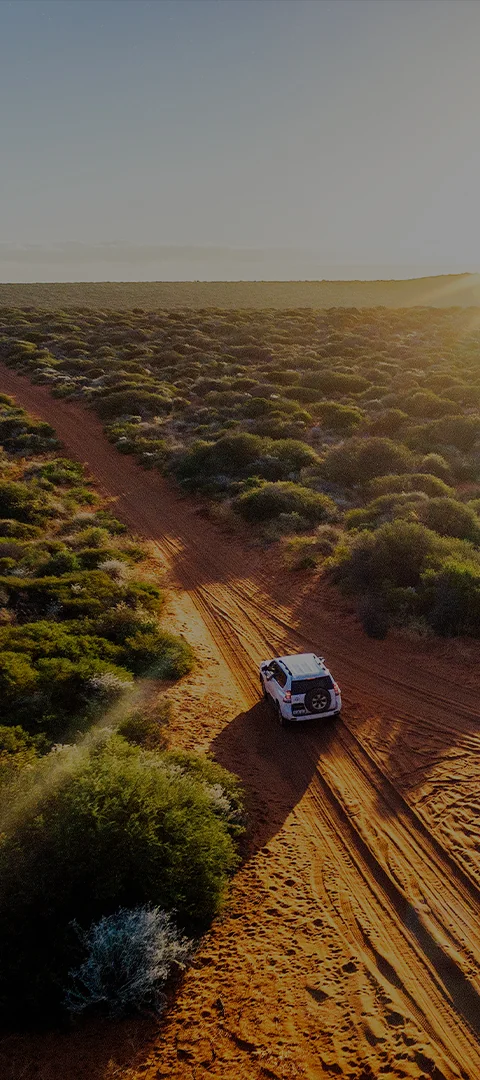Optimal Performance
Setting Up Your 4x4 Suspension for Optimal Performance
Remember, the key to setting up your 4x4 suspension lies in understanding your vehicle's primary usage and finding a suspension kit that strikes the right balance for your needs. Consulting with suspension experts like Dobinsons and RAW 4x4 can also help you make an informed decision and ensure optimal performance and comfort for your off-road adventures.
The best approach is to configure your 4x4 suspension based on what you will primarily use the vehicle for about 80% of the time. Finding the right suspension kit involves striking a balance and choosing one that aligns with the main purpose of your vehicle.
When selecting a suspension kit, consider the primary use of your 4x4 vehicle. Here are some scenarios to guide you:
- General Driving and Off-Road Adventures: For regular driving and occasional off-road adventures, opt for a balanced suspension kit that offers a comfortable ride and reasonable off-road performance. Heavy-duty kits might be unnecessary and lead to a stiffer ride.
- Towing: If you plan to tow a caravan or boat occasionally, consider installing an airbag set up. This setup provides a better compromise compared to choosing extra heavy-duty coils, which may result in a harsh ride and elevated rear suspension height when not towing.
- Tradesman or Mining Vehicle: For vehicles that are constantly loaded due to tradesman or mining purposes, a heavy-duty suspension set up is more appropriate. This setup ensures your 4x4 can handle the consistent load efficiently.
- General Driving and Off-Road Adventures: For regular driving and occasional off-road adventures, opt for a balanced suspension kit that offers a comfortable ride and reasonable off-road performance. Heavy-duty kits might be unnecessary and lead to a stiffer ride.
- Towing: If you plan to tow a caravan or boat occasionally, consider installing an airbag set up. This setup provides a better compromise compared to choosing extra heavy-duty coils, which may result in a harsh ride and elevated rear suspension height when not towing.
- Tradesman or Mining Vehicle: For vehicles that are constantly loaded due to tradesman or mining purposes, a heavy-duty suspension set up is more appropriate. This setup ensures your 4x4 can handle the consistent load efficiently.
Selecting the wrong suspension setup can lead to several issues:
- Uncomfortable Ride: Installing a heavy-duty suspension kit for occasional heavy loads can make the vehicle's ride uncomfortably stiff when it's not carrying a significant load.
- Negative Impact on Components: Inappropriately heavy suspension setups can put unnecessary strain on other suspension components, potentially causing premature wear and damage.
- Rear Suspension Height: Incorrectly chosen setups can cause the rear of the vehicle to sit too high or too low, affecting stability and handling.
- Uncomfortable Ride: Installing a heavy-duty suspension kit for occasional heavy loads can make the vehicle's ride uncomfortably stiff when it's not carrying a significant load.
- Negative Impact on Components: Inappropriately heavy suspension setups can put unnecessary strain on other suspension components, potentially causing premature wear and damage.
- Rear Suspension Height: Incorrectly chosen setups can cause the rear of the vehicle to sit too high or too low, affecting stability and handling.
If you've replaced the factory tub with a steel or alloy tray, consider the additional weight factor when calculating the total load. Take into account the weight of toolboxes, tools, and equipment that will be carried regularly.
Ensure your vehicle is fully equipped with all accessories and loaded for your typical day-to-day driving. Then, proceed to weigh both the front and rear axles. By subtracting these weights from the factory standard weights, you'll determine the precise springs required for your vehicle.
Accessories vary in weight depending on the manufacturer and the purpose of the accessories. We have put together a list below of what an average accessory would weigh.
(**please note this is for guidance purposes only**)
| Accessory | Type | Weight (kg) |
|---|---|---|
| Nudge Bar | Vehicle Protection | 14 |
| Bull Bar (Steel) | Vehicle Protection | 60 |
| Bull Bar (Aluminium) | Vehicle Protection | 40 |
| Side Bar | Vehicle Protection | 16 |
| Side Step (Steel) | Vehicle Protection | 40 |
| Rear Bar (Aftermarket) | Vehicle Protection | 50 |
| Winch (Synthetic Rope) | Winches | 25 |
| Winch (Steel Cable) | Winches | 45 |
| Roof Tray (Steel) Full Length - Empty | Roof Top | 60 |
| Roof Tray (Alloy) Full Length - Empty | Roof Top | 30 |
| Roof Top Tent | Roof Top | 70 |
| Underbody Guard (Front) | Underbody Guards | 13 |
| Underbody Guard (Transmission) | Underbody Guards | 10 |
| Underbody Guard (Sump) | Underbody Guards | 7.5 |
| Underbody Guard (Transfer) | Underbody Guards | 10 |
| Awning | Other Accessories | 12 |
| Recovery Jack | Other Accessories | 16 |
| HD Recovery Kit | Other Accessories | 20 |
| Second Battery | Other Accessories | 30 |
| Driving Light | Other Accessories | 3 |
| Tool Box Alloy (Empty) | Other Accessories | 50 |
| 80L Fridge (Empty) | Other Accessories | 35 |
| Wagon - Rear Tyre Carrier (No Tyre) | Other Accessories | 20 |
| Spare Wheel | Other Accessories | 40 |
| Drawer System | Other Accessories | 100 |
| Fuel Tank (Long Range) | Other Accessories | 90 |
| Tray (Steel) UTE | Other Accessories | 200 |
| Tray (Aluminium) UTE | Other Accessories | 100 |

